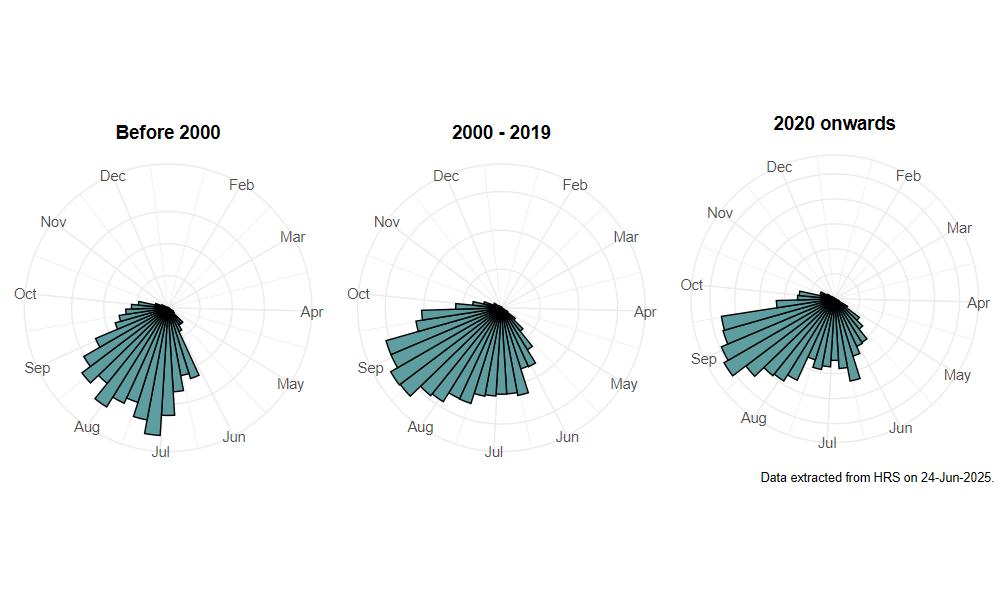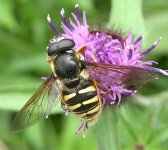Sericomyia silentis (Harris, 1776)
Identification
Identification difficulty = 1. ![]()
![]() according to Ball & Morris, 20241
according to Ball & Morris, 20241
Biology
The larva is of the 'long-tailed', aquatic type and has been found amongst old, wet, rotting wood fragments in a sawmill and from a water-filled drainage ditch on a cut-over peat bog. It is associated with peaty pools in moorland and acid habitats, including bogs on heathlands in the south and east of Britain; poor-fen and wet woodland, including Sallow Salix sp. and Alder Alnus glutinosa carr. Adults are usually found along tracksides or woodland edges, visiting flowers or settled in sunlight on vegetation or bare areas of ground. They are very strong and active fliers and appear to disperse widely, often being found far from water.
Flight period
The following plots show the number of unique records per week excluding those reported to be of immature stages.

Distribution
Widespread and abundant in northern and western Britain, especially west Wales, the Pennines and other upland areas of northern England, and in upland Scotland. In the lowlands of southern and eastern England it is much scarcer, probably breeding on heathland and other more acid habitats, although adults may be found some distance from such localities. It is almost absent from most of the English Midlands and rather local in East Anglia.

Trends
The following plots show the Frescalo TFactor vs year and a map of the rescaled frequency (all records) for the species.
-
Ball, S., & Morris, R. (2024). Hoverflies of Britain and Ireland. WILDGuides (3rd ed.). Oxford: Princeton University Press. ↩
